Posted by Elena del Valle on June 5, 2009
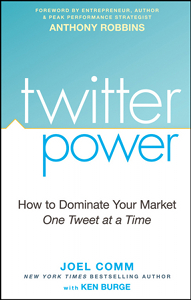
Twitter Power book cover
When a US Airways airplane landed safely in the Hudson River earlier this year many people first heard about it on Twitter, the popular social networking site known for its short postings. In his most recent book Author Joe Comm, a social media enthusiast, points out that the first medium in which news of the recent India terrorist attacks appeared was Twitter. Only several hours later did broadcast media begin coverage. It would appear Twitter is well established as a medium and method to communicate news quickly and efficiently internationally. But does it play a business role?
Comm and Ken Burge, his business partner, argue that it does. In the recently published book, Twitter Power How to Dominate Your Market One Tweet at a Time (Wiley, $24.95) Comm, with Burge’s help and a foreword by Author Anthony Robbins, dedicates 245-pages to the discussion. It took him two months to write the book, according to a representative from his publisher. Comm’s expertise in the area was born from his business experience online. He made a business, started in his bedroom, of providing advice and promoting products online. This in turn led to the seven figure company he now owns, he says in the Introduction of the book.
Unlike Facebook and MySpace Twitter’s usefulness wasn’t obvious to him from the beginning. Over time, the micro blogging website has revealed itself as an “important and easy” way of networking, unearthing new information and finding new customers for him. Twitter also has helped expand the reach of his brand and allowed him to connect with experts and receive advice from people he believes he would have never met otherwise. Most importantly for businesses considering whether to spend their time following and being followed on the 140-character-per-posting site he says Twitter drives traffic to his portal.
Comm argues that to get the most out of Twitter it is best to use it in combination with other social networking sites. In the book, he dedicates time to outlining the basics of social media before discussing Twitter and what makes it special. Next, he explains how to get started on Twitter and, what many readers are likely to be most interested in, how to get a following on the website.
He believes getting followers is easy but keeping them is a challenge. According to him it takes only a few followers to make it to the top 10 percent of people on Twitter. He includes a 30-day step-by-step outline for newbies who want to make inroads on Twitter.
Ultimately, he argues, tweeting is a tool that can lead dedicated users to build beneficial relationships and a loyal following. To accomplish that they have to do more than just post information or comments; they have to connect with customers, problem solve, win referrals, and provide support. If they are successful they will develop a loyal following which may generate visitors, traffic and income. He also mentions Twitter add-on tools and applications and their role and benefits.
Comm describes Twitter as a “virtual giant water cooler” and emphasizes that sales oriented messages are not appropriate. At the same time, he believes many good things can result from the relationships born there for those willing to spend the time and energy to build them.
Comm is also author of The AdSense Code and Click Here to Order. In researching Comm for this article the author also found several websites listing complaints relating to Comm and his online businesses as well as questions regarding his methods. According to a spokesperson for the publishing company, “When you do business with tens of thousands of customers you are bound to have customer service issues. Please note that the BBB page says all issues have been resolved satisfactorily.” Comm did not reply directly. Burge is president of InfoMedia Inc. An eight year veteran of Microsoft, he is responsible for the management of 50 profitable online properties, according to promotional materials.
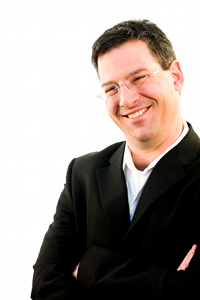
Joel Comm, author, Twitter Power
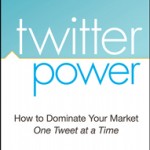
Twitter Power book cover
Click here to buy Twitter Power: How to Dominate Your Market One Tweet at a Time
Comments:
Filed Under: Books
Posted by Elena del Valle on June 4, 2009
Information provided by our Event Partner

What Teens Want 2009
Marketing to Super-Communicators
June 24 – 25, 2009
The Time & Life Building – New York, NY
Don’t miss What Teens Want 2009 – the 11th installment of What Teens Want – in New York on June 24-25, 2009! You’ll gain exclusive Nielsen research and trusted expertise to help you work out how your brand can play better with teen consumers and technology. Our all-star speaker line-up will help you predict the future of teen trends on everything from mobile networking to fashion to music distribution.
For the complete agenda or to register please visit: www.whatteenswant.com
HispanicMPR members Save $400 off Full Registration Price. Valid for all new registrations only. Enter Promo Code: HMPR599
Posted by Elena del Valle on June 3, 2009
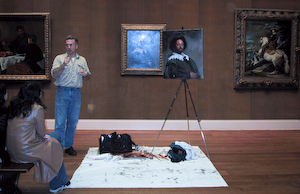
Would you like to be more creative? Try spending some time in another country. It seems living abroad might enhance your creativity. Really. Rudyard Kipling, Pablo Picasso, Ernest Hemingway, Paul Gauguin, and Samuel Beckett all did it and look at what happened to their careers. According to two psychologists relying on anecdotal evidence, experience living outside a person’s home country made them more likely to solve a creativity problem compared to colleagues who had not lived abroad.
According to an article in the Journal of Personality and Social Psychology, two researchers William Maddux of INSEAD, a business school in Fontainebleau, France, and Adam Galinsky, of the Kellogg School of Management in Chicago, gave 155 American business students and 55 foreign ones studying in America a creativity test. Each subject received a candle, some matches and a box of drawing pins, and was asked to attach the candle to a cardboard wall without allowing any wax to drip on the floor when the candle was lit.
Those who used the box as a candleholder and fixed it to the wall with the pins solved the problem. In the end, 60 percent of students who were either living abroad or had spent some time doing so solved the problem while only 42 percent of those who had not lived abroad did so.
They conducted another study in which 72 Americans and 36 foreigners tested their creative negotiating skills. As part of the exercise, students in pairs were assigned a negotiation in which each side was provided instructions that were contrary to an agreement. Seventy percent of the pairs of negotiators where both had lived outside their countries were able to reach an agreement. In contrast, when neither negotiator had lived abroad they were unable to reach a deal.
Could it be simply that creative people are more likely to choose to live abroad? To find out the researchers looked at traits like openness to new experiences, relying on statistical methods to eliminate the possibility that it was just creativity driving people to live abroad. In the end, they concluded that the experience of living abroad fostered creativity.
“Moving Beyond Traditional Media Measurement: measuring conversations and social media” audio recording

Presenter Katie Delahaye Paine, founder, KDPaine & Partners
Find out about
- Issues affecting online public relationships today
- Testing relationships as part of a survey
- Measuring ethnic group relationships
- Measuring foreign language communications in a similar ways to English
- Biggest challenges measuring conversations and social media
- Measuring online relationships with little or no money
Click here for information on “Moving Beyond Traditional Media Measurement”
Posted by Elena del Valle on June 1, 2009
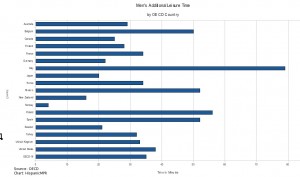
Click to enlarge
Do you think men and women share equally in the household duties? Do you think they both have the same amount of time free to enjoy activities of their choice? If you said yes you might be surprised by the results of a recent survey of Organization for Economic Co-operation and Development (OECD) conducted in 18 industrialized countries including the United States. According to researchers, men have more leisure time than women in all of the countries they examined.
The gap between the genders seems to be strongest in Catholic countries. For example, Italian men have 80 minutes more of leisure time than women in their country. Norway, on the other hand, seems to have the greatest gender equality when it comes to leisure time. In that country, men only have a few more minutes of leisure than women. American men have 40 minutes more leisure time per day than women.
What do people do when they have free time? In Mexico and Japan, they spend almost half their leisure time watching TV. People in New Zealand spend less than 25 percent of their leisure time watching the tube. People in Turkey, the most sociable nation, spend 35 percent of their leisure time entertaining friends. In Spain, people spend 13 percent of their time off doing physical activities, making that nation the most active one in that category.
The information was published in the latest edition of Society at a Glance, a publication of the OECD that features an overview of social trends and policy developments in OECD countries relying on indicators from OECD studies and other sources. One of the chapters in the report was dedicated to leisure time in the 18 OECD countries for which up-to-date time-use surveys are available from 2006, and based on nationally representative samples of between 4,000 and 200,000 people.
OECD provides a forum for member governments to compare policy experiences, “seek answers to common problems, identify good practice and coordinate domestic and international policies.”
“Happy for No Reason” audio recording

Presenter Marci Shimoff, author, Happy for No Reason
What: An audio presentation by Marci Shimoff and Q&A with Marci Shimoff and HispanicMPR.com audio program host Elena del Valle about finding happiness.
Available exclusively on HispanicMPR.com!
Click here to listen to a short interview with Marci
Click here for more information on “Happy for No Reason” audio recording with Marci Shimoff

















